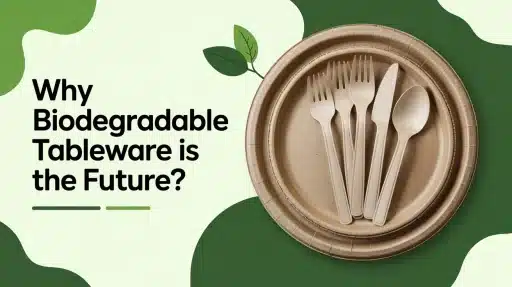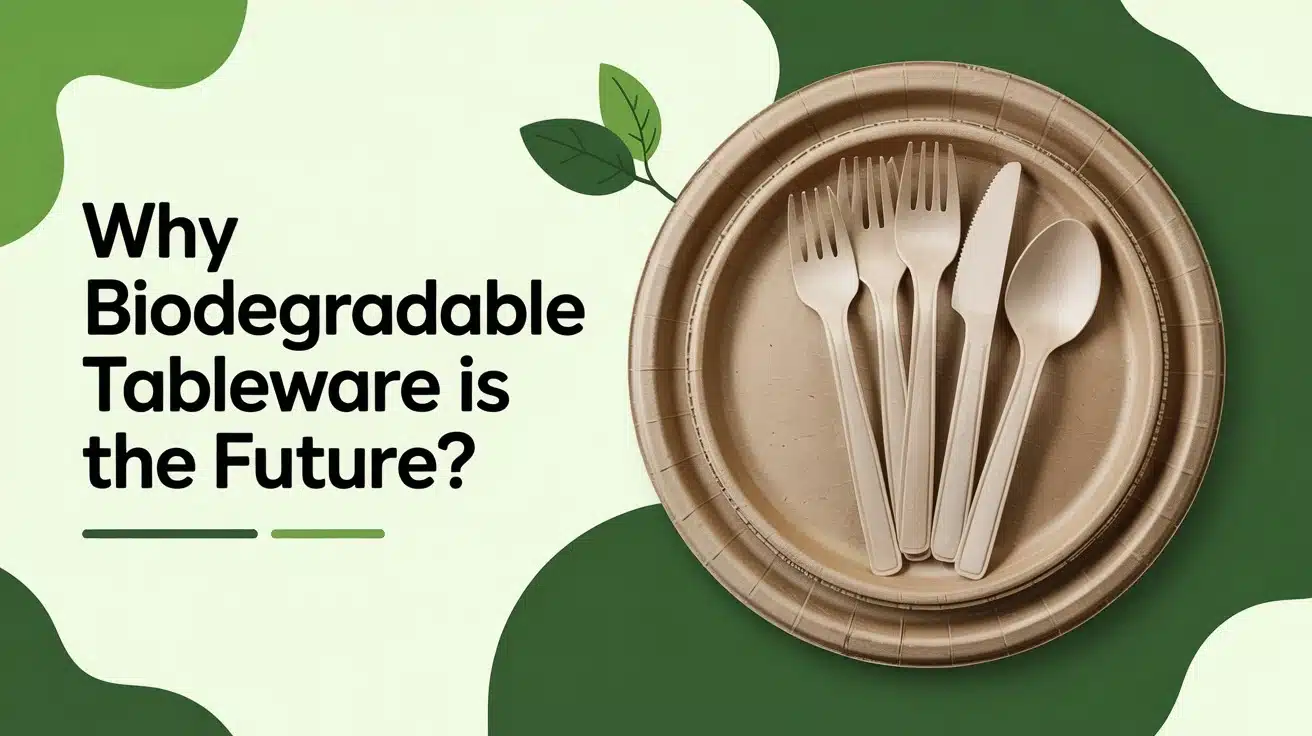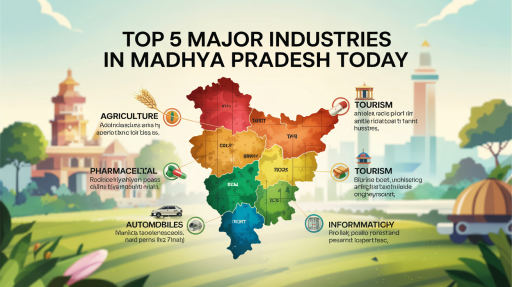The move to biodegradable tableware is not merely a passing fashion; it is an urgent requirement born of environmental consciousness, changing legislation, and consumer behavior. As climate change, plastic pollution, and the need for sustainable living take center stage in public discussion, industries are compelled to rethink the conventional way of doing things. One sector that is fast undergoing changes is the biodegradable tableware sector in India.
Startups and entrepreneurs drive this new evolution where the working philosophy is in direct synergy with the ecology. So, if you are thinking of starting a business in this sector, it does not get any better. Here is an insight into why biodegradable tableware is the future, the market dynamics, growth opportunities, and how NPCS can help you set up and scale your business.
Introduction to Biodegradable Tableware
Biodegradable tableware comprises plates, cups, bowls, cutlery, and other disposable items made from organic materials such as sugarcane bagasse, areca leaves, cornstarch, rice husk, and bamboo. Unlike plastics, which remain in the environment for centuries, these products disintegrate naturally into the soil in a matter of weeks or months without imposing any toxic residue.
Key Materials Used in Biodegradable Tableware:
- Sugarcane Bagasse
- Bamboo
- Areca Palm Leaves
- Cornstarch
- Rice Husk
- Wheat Bran
Key Drivers Fueling the Growth of Biodegradable Tableware
- Environmental Benefits
The most compelling feature of biodegradable tableware would be its environmental impact:
- Less Carbon Footprint: Production of these biodegradable products usually emits fewer CO₂ emissions than those of plastics.
- Compostable Materials: They break down easily into non-toxic compounds that increase the fertility of the soil.
- Resource Efficiency: Several materials for these biodegradable products are considered agro-wastes, thus turning wastes into resource utilization.
With environmental degradation reaching alarming levels, consumers and policymakers vie strongly for environmentally friendly alternatives.
- Government Initiatives
The most compelling feature of biodegradable tableware would be its environmental impact:
- Less Carbon Footprint: Production of these biodegradable products usually emits fewer CO₂ emissions than those of plastics.
- Compostable Materials: They break down easily into non-toxic compounds that increase the fertility of the soil.
- Resource Efficiency: Several materials for these biodegradable products are considered agro-wastes, thus turning wastes into resource utilization.
- Sustainability Mandates: With environmental degradation reaching alarming levels, consumers and policymakers vie strongly for environmentally friendly alternatives.
Demand/supply relationship in the market for biodegradable tableware under regulation ensures a steady and growing demand from all sectors.
- Global Market Trends
Global markets for biodegradable tableware are rapidly growing for:
- Consumers, especially from North America and Europe, are willing to pay extra for sustainable commodities.
- Major brands and food chains prefer eco-friendly packaging.
- International regulations, such as the Single-Use Plastics Directive from the EU, are enhancing demand on a global scale.
For Indian manufacturers and entrepreneurs, this means profitable export opportunities.
Why Startups and Entrepreneurs Should Enter the Biodegradable Tableware Sector
- Immense Market Potential
According to a recent study, the Indian market for biodegradable tableware is expected to grow at a CAGR of over 8-10% for the next five years. Increasing awareness on the consumer side, conducive government policies, and rising international demand nudging this into a high-potential industry.
- Low Entry Barriers
Biodegradable tableware manufacturing stands apart from other manufacturing industries requiring heavy investments and complicated technology, on account of:
- The capital requirement is moderate.
- Raw materials are readily available.
- The manufacturing process follows simple steps.
This makes the sector well suited for small- and medium-scale enterprises and startups.
- Export Opportunities
The advantage of India’s agricultural strength, coupled with low-cost labor, gives it a price advantage in global markets in producing cheap yet quality biodegradable tableware.
- Sustainability Alignment
More and more investors are demanding businesses to align themselves with the ESG values (Environmental, Social, and Governance). In such a context, a line of biodegradable tableware hits all the right notes, thereby boosting your startup’s investment appeal.
Types of Biodegradable Tableware Products
Understanding the different categories will help entrepreneurs cater to diverse market needs:
| Product | Raw Material | Application |
| Plates | Areca leaf, Sugarcane bagasse | Events, Restaurants, Catering |
| Bowls | Cornstarch, Rice Husk | Food packaging, Takeaway |
| Cups | PLA, Paper-coated | Beverages, Cafes |
| Cutlery | Bamboo, Cornstarch | Restaurants, Food deliveries |
| Trays | Bagasse, Wheat bran | Supermarkets, Food packaging |
Each of these segments offers unique opportunities for specialization and branding.
Manufacturing Process of Biodegradable Tableware
Here are the steps in establishing a biodegradable tableware manufacturing plant:
1. Raw Material Procurement
Agricultural waste or raw materials are sourced: bagasse, rice husk, and cornstarch.
2. Pulping and Molding
The raw material is pulped with water and some additives, poured into molds, and pressed under heat and pressure.
3. Drying
The molded product is dried to reduce moisture content.
4. Finishing
This involves trimming, shaping, and smoothing the product for looks.
5. Packaging
Eco-friendly packaging is used for transportation and sale.
Major Machinery Required:
- Hydraulic Press Machine
- Pulping Machine
- Drying Chambers
- Trimming Machines
- Packaging Units
Investment and Profitability Analysis
Capital Investment Range:
- Small-Scale Plant: ₹20–30 Lakhs
- Medium-Scale Plant: ₹50 Lakhs–1 Crore
- Large-Scale Plant: ₹2–5 Crores
Profit Margins:
- Gross Margins happen to vary depending on the product type and other branding considerations that can be anywhere from 35% to 55%.
Payback Period:
- 2–3 years for medium and large-scale units in a more favourable market condition.
Challenges in the Biodegradable Tableware Sector
While opportunities are soaring, certains challenges should always be kept in mind by entrepreneurs:
- Competition from Low-Cost Alternatives: Plastic still dominates because it is cheap.
- Raw Material Availability: Seasonal fluctuations in agricultural waste
- Consumer Awareness: Continuous branding and marketing required.
These come with the territory, but proactive strategies, innovations, and strong marketing efforts will propel you through.
How NPCS Supports Entrepreneurs in the Biodegradable Tableware Sector
Niir Project Consultancy Services (NPCS) provides holistic services designed for startups and firms venturing into the biodegradable tableware arena.
1. Preparing Detailed Project Reports
Our Market Survey cum Detailed Techno Economic Feasibility Report includes:
- Manufacturing Process
- Raw Material Details
- Machinery List
- Plant Layout and Flow Sheet Diagram
- Profitability, ROI, Payback Period, and Other Financial Projections
2. Market Research Reports
An in-depth market research enables you to understand:
- Market Size and Trends
- Key Consumer Segments
- Competitive Landscape
- Pricing Strategies
3. Preparing Business Plans
Business Plans should be used to:
- Seek funding from banks and investors.
- Apply for government subsidies.
- Guide the execution of the business.
4. Export Guidance
- We assist startups in recognizing export opportunities, regulations, and preparation for global market entry.
For complete information about our services to venture into entrepreneurship, visit Niir Project consultancy Services
Future Trends in Biodegradable Tableware
Some of the factors that will change the industry in the future are:
1. Innovations in Technology
- Smart biodegradable materials with enhanced durability.
- Water-repellent coatings from natural substances.
2. Personalization and Branding
- Custom-made designs for restaurants and event companies.
- Private-label biodegradable ware.
3. Alliances
- Cooperations between manufacturers of biodegradable goods and FMCG giants, hospitality groups, and retail chains.
- Demand from Government
- Green procurement rules in tenders for the public sector.
Conclusion: The Right Time to Invest in Biodegradable Tableware
Yet another nail in the coffin of single-use plastics: the use of biodegradable tableware is a trend that has caught various big names from all over the world. As India sells the world on sustainable development, demand will definitely go up for an environmentally friendly alternative to plastics. It is very rare for an industry to present this classical combination of social impact and profits to startups and entrepreneurs.
Have the requisite information, invest in top-notch manufacturing, and team up with experts such as NPCS for professional guidance, and you might be able to create a thriving and sustainable business.
The future belongs to those daring to innovate and make their moves. It is set now to make your mark on this green revolution and write history in the annals of present and future generations.
Ready to Start Your Biodegradable Tableware Venture?
Contact Niir Project Consultancy Services (NPCS) for assistance on a one-to-one basis, including preparing detailed project reports and conducting market research. Let’s make this world a better, greener, and sustainable place to be, together.






